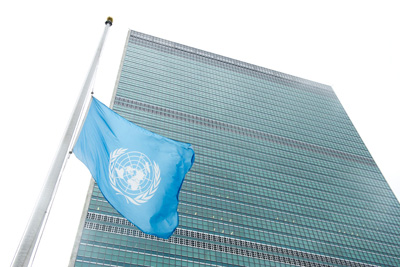
UN informed about results of Uzbekistan’s anti-drug policy
Efforts to reduce drug supply and demand continued in 2016 in accordance with the drug control strategy set out in the programme of comprehensive measures to combat drug abuse and drug trafficking for the period 2016-2020, the document said.
It added that attention was paid to improving the regulatory framework governing the trade in narcotic substances and the provision of drug addiction treatment, and to building the logistical and human resources capacities of special law enforcement units and addiction treatment services.
As a result of the organizational, practical, operational and preventive measures taken by the law enforcement agencies, 6,646 drug trafficking crimes were identified in 2016 (compared to 6,648 for the same period in the previous year).
Of the total number of drug-related crimes identified, 2,798 (3,017) involved drug sales; 645 (709) involved smuggling, 1,482 (1,301) involved the illegal cultivation of narcotic plants, 145 (125) involved the contents of drug houses and 1,576 (1,496) were other drug-related crimes.
A total of 3 tons and 542.4 kg (2 tons and 510.1 kg) of trafficked narcotic substances were seized, including 107.76 kg (147.92 kg) of heroin, 1 ton and 446.82 kg (882.25 kg) of opium, 883.23 kg (1 ton and 25.05 kg) of marijuana, 241.15 kg (250.21 kg) of hashish, 862.84 kg (204.66 kg) of koknar, 579.1 g (8.6 g) of new psychoactive substances and other synthetic drugs, and 19,277 tablets (7,184 tablets) of psychotropic substances.
In 2016, 110 (138) foreign nationals were arrested in Uzbekistan for crimes connected with drug trafficking. The largest numbers were of nationals of Afghanistan — 24 (33), Tajikistan — 27 (27), Russia — 19 (24), Kazakhstan — 14 (9) and Kyrgyzstan – 9 (8). Seizures of narcotics amounted to 340 kg (364 kg), or 10 per cent (14.5 per cent) of the total amount seized in Uzbekistan. Also seized were 2,461 tablets (1,422 tablets) of psychotropic substances and 45.8 g (7800 l and 89.8 g) of precursors.
In order to identify and suppress illegal cultivation of narcotic plants and cut off the channels by which narcotics arrive in Uzbekistan from neighbouring countries, a two-stage integrated large-scale operation known as Black Poppy 2016 was conducted by the law enforcement agencies.
As a result of the organizational, preventive, operational and investigative measures taken, 1,070 (1,049) cases of illegal cultivation of narcotic plants were identified. A total area of 4,933 square metres (5,132 square metres) of illegal crops was destroyed.
During the operation 2,659 (2,687) drug-related crimes were detected and 1 ton and 321 kg (621 kg) of narcotic substances were seized, including 3.4 kg (0.76 kg) of heroin, 49.3 kg (28.8 kg) of opium, 45.9 kg (8.1 kg) of hashish, 462.2 kg (437.4 kg) of marijuana, and 760 kg (145.5 kg) of koknar.
As part of the one-month campaign to mark 26 June as the International Day Against Drug Abuse and Illicit Trafficking, an event was held to burn the narcotic drugs seized by the law enforcement agencies of Uzbekistan during illicit trafficking. Representatives of the diplomatic corps, civil society and the media were invited to attend. Ovens were used to destroy 1 ton and 438 kg of drugs, including 145 kg of heroin, 655 kg of opium, 496 kg of marijuana, 115 kg of hashish, 27 kg of koknar and a large quantity of drugs in tablet and liquid form.
The law enforcement agencies of Uzbekistan report that in 2016 43 instances of trafficking in new types of psychoactive substances were detected, and that 579.1 g of various new types of psychoactive substances and other synthetic drugs were seized. A number of chemicals not appearing on the list of substances banned in Uzbekistan were also seized: ADB-FUBINACA, 5F-PB-22, 5F-PB-22 ethelester analog, 5-Fluoro-AMB, AB-FUBINACA, MDMB-CHMICA, NM-2201, UR-144 N (3-chloropentyl) analog.
An analysis of drug trafficking in Uzbekistan has so far shown no sign of prerequisite conditions for a mass distribution of new types of psychoactive substances within the country, given that drugs from Afghanistan (heroin, opium and hashish) account for a substantial share of seizures of trafficked drugs.
In order to pre-empt the spread of new types of narcotic substances and to take preventive action, an inter-agency working group set up within the National Information and Analytical Centre for Drug Control continued to work on further developing existing counter-trafficking legislation. Its efforts culminated in a draft Act to amend and supplement several Acts of the Republic of Uzbekistan.
Data from the narcotics section of the Ministry of Health indicates a positive trend over the last ten years in main indicators relating to drug addiction.
In that connection, the number of addicts appearing in dispensary records over the period from 2007 to 2016 dropped from 19,868 to 10,505.
The number of opiate addicts continued to decline: 5,420 (7,977 in 2015), representing 51.6 per cent (60.3 per cent) of the overall number appearing in the records. The number of heroin addicts declined substantially, standing at 4,063 (6,554), or 38.7 per cent (49.6 per cent). The rate of cannabinoid abuse increased to 45.1 per cent (36.9 per cent) of the overall number of drug users.
A gender and age analysis of addicts reveals an increase in patients aged 40 and over: 58 per cent (56.1 per cent). The share represented by those in the 20 39 age bracket is 42 per cent (43.9 per cent).
The number of injecting addicts has fallen to 1,782 (3,825), or 17 per cent (28.9 per cent) of the overall number appearing in the records.
A drop in the number of addicts undergoing specialized treatment at addiction centres in Uzbekistan was observed in 2016: 2,220 (2,473).
Among those treated at inpatient facilities, the proportion of opiate addicts dropped: 60.2 per cent (71.4 per cent), but the proportion of cannabinoid addicts rose: 23.3 per cent (15 per cent).
The report also covers information on efforts of Uzbekistan on prevention of drug-related crimes and establishment of cooperation with foreign countries and international bodies.